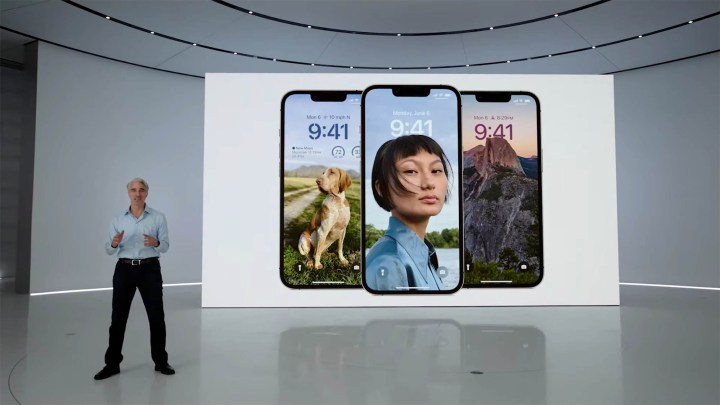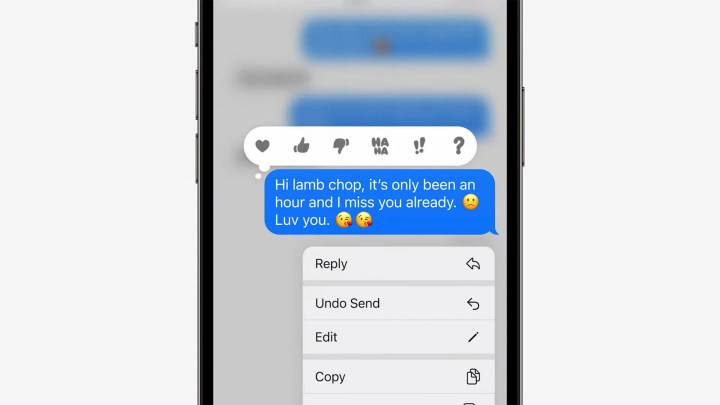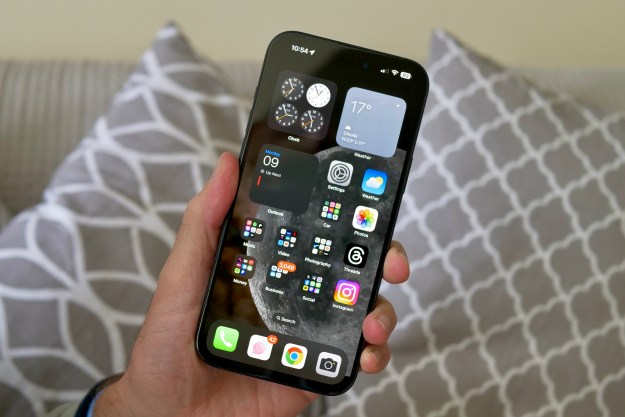Apple announced iOS 16 at WWDC on June 6, 2022. There, the company shared all the main crowd-pleasing features alongside its iPadOS 16 and MacOS Ventura previews. As of September 12, iOS 16 is now available as a free update for anyone with an iPhone 8 or newer. It will also ship the iPhone 14 with iOS 16 pre-installed for anyone who buys this year’s newest iPhone.
Here’s a quick look at everything coming from iOS 16.
iPhones that will get iOS 16
Apple is known for supporting its iPhones for extended periods compared to Android rivals. The Pixel 3 and 3a, for example, won’t be getting Android 13 this fall, while the similarly aged iPhone X and XS can download iOS 16 without a problem.
iOS 15 is currently supported on all iPhones from the iPhone 6S and on. With iOS 16, the iPhone 6S and 7 have been put to pasture. Apple supports newer iPhones from the iPhone 8 and second-generation iPhone SE all the way up to the iPhone 13 (plus the iPhone 14). You’re almost certainly not getting every feature on older iPhones, but it’ll be good enough to chug along another year.
iOS 16’s biggest updates

iOS 16 is a significant iOS update, with immediately visible design changes, quality-of-life additions, under-the-hood improvements, and more. Apple’s lead feature here is the new lock screen. It’s what you see when you look at an iOS 16 device, and it steals some of Google’s customization thunder to boot. Updates to Messages will please everyone, while changes to Spotlight and Safari provide more power to those who want it. Apple also has dove into the Buy Now Pay Later market with Apple Pay Later, while a new Safety Check feature sees the company pivot back towards being socially responsible.
“iOS 16 is a big release with updates that will change the way you experience iPhone,” said Craig Federighi, Apple’s senior vice president of software engineering. “We have reimagined how the Lock Screen looks and works with exciting new features that make it more personal and helpful, introduced iCloud Shared Photo Library for families, streamlined communication through new capabilities in Messages and Mail, and harnessed enhanced intelligence with updates to Live Text and Visual Look Up.”
iOS 16 lock screen and notifications

The face of iOS 16’s changes are the lock screen changes, and those are spectacular. They add a touch of personalization to the iPhone’s lock screen, with support for new-found interactive widgets and live lock screen notifications.
It’s a really meaningful update. Apple offers a selection of colors and fonts for your lock screen, and the clock interacts with the image so that it appears to be behind it. Everyone’s lock screen can, for the first time, look a fair bit different.
It’s not just a customization-only update — the new lock screen also sees itself tied to the Focus mode features Apple introduced with iOS 15. This means if you’re in your gaming, personal, or work Focus, you can assign wallpapers and lock screen widgets to each mode. It’s a more thoughtful application of customization that recalls the profiles you’d see in now-ancient feature phones. As for Focus mode itself, it’s now gone system-wide. This means apps like Chrome and Safari can hide distracting websites from you, possibly sherlocking extensions that make it their business to do so.
iOS 16 iMessage and Mail improvements

Apple’s iMessage picks up a few user points as well. iOS 16 adds undo send and edit message capabilities, two new features that let you take control of your message. You have 15 minutes after sending a message to edit it but only two minutes to unsend something. Both features are exactly what they sound like, with one withdrawing a message after it has been sent and the other allowing for tweaks to it. The short time window prevents users from using this feature for mischief or malice, although it’s a lot less than what WhatsApp offers.
iOS 16 also improves how the Messages app works with Android phones. It’s killing off Tapback spam in cross-platform group messages and displaying these reactions properly. There’s still no RCS for enhanced cross-platform messaging, but at least there’s one less annoyance for iOS and Android group chat users to deal with.
Finally, Apple is including more sharing features with SharePlay so users can watch movies and listen to music together while using the Messages app to chat — like some sort of private livestream.
In #iOS16 @Apple added support for the Brand Indicators for Message Identification (BIMI) standard in the native Mail application. pic.twitter.com/J42JGE0ulP
— Charlie Fish (@char_fish) June 22, 2022
These changes also extend to the Mail app somewhat. iOS 16 undo send to its built-in Mail app. It’s not the full two minutes you get with iMessage, but more of a 10-second delay that lets you recall your email should you detect a typo. You also get additional features such as a nudge if you write an email with reference to an attachment but forget to include any attachment, and Gmail-style features include an automatic reminder if you haven’t followed up on an email after a certain period.
A new security-enhancing feature also making its way along is support for Brand Indicators for Message Identification (BIMI), a new email standard that hopes to make it clear where a message is coming from. Say you get an email from Amazon or Chase Bank. BIMI will let you be confident that it’s coming directly from them and not a phishing email.
iOS 16 new accessibility tools

iOS 16 also puts a big focus on accessibility tools. It adds Door Detection, a feature that’s aimed at helping users with impaired vision navigate around their environment. It uses the lidar scanner that Apple introduced on the iPhone 12 Pro to help detect doors, share the state of the door (such as open or closed), as well as how to interact with the door. The Door Detection feature can also read out text around the door, useful for conveying information like room numbers and accessibility entrances.
Similar to Google Pixel phones, you can use Live Captions to follow along with videos if you’re hard of hearing. “Users can follow along more easily with any audio content — whether they are on a phone or FaceTime call, using a video conferencing or social media app, streaming media content, or having a conversation with someone next to them,” Apple explains.
iOS 16 removes captchas

With iOS 16 (and iPadOS 16), Apple is eliminating one of the most annoying things about the modern internet — captchas. Thanks to Apple’s Automatic Verification system, you won’t need to prove your humanity to a computer by selecting which traffic light or zebra crossing is real. The feature is enabled by Private Access Tokens and powered by iCloud.
“Don’t be captured by CAPTCHAs! Private Access Tokens are a powerful alternative that helps you identify HTTP requests from legitimate devices and people without compromising their identity or personal information,” Apple’s video description reads. The video then goes on to identify several weaknesses of CAPTCHAs, including a slower user experience, privacy risks that undermine iOS’ privacy protections, and accessibility barriers.
Apple has partnered up with Fastly and Cloudflare, content delivery networks that provide the majority of CAPTCHAs you’re most likely to interact it on a day-to-day basis. Later this year, others will be able to join the club.
Everything else in iOS 16

Aside from the headlining features, there are also several small features in iOS 16 that haven’t gotten nearly as much of the spotlight. You are now able to use Face ID horizontally and not just vertically on select iPhones. A new tool allows people at risk from domestic abuse to quickly curate the content and permissions they share with their partner’s accounts, as well as other devices that they may be logged into. CarPlay sees a powerful update that makes it more all-encompassing, but you won’t see it until late 2023.
Apple’s in-box apps also see updates here. Most notably, Photos plugs into a new iCloud Shared Photo Library feature aimed at helping families sync all their images between their Apple devices. It’s useful for holidays and day trips alike. Maps picks up multi-stop navigation with up to 15 stops per trip, while Safari kills off passwords and introduces more secure passkeys. Health gets medication tracking, and a new Fitness app is being made available for those who don’t have Apple Watches but still want to track basic activity.
What about the iPhone 14 and iPhone 14 Pro?

Apple launched the iPhone 14 and iPhone 14 Pro with iOS 16 at its “Far Out” event in September. There, the company unveiled a large “regular” iPhone for the first time since the XS and dropped the Mini iPhone as it reacts to market demand. The release saw the demise of the notch, the birth of the novel “Dynamic Island” interface, and the inclusion of larger 48MP cameras on the Pro iPhones, while the non-Pro iPhones picked up RAM boosts and improved camera systems.
Pulling back to Dynamic Island for a moment. That’s a feature where the iPhone’s notch replacement essentially becomes part of the user interface. Face ID, the music player, and contactless payments now pop and live there. More importantly, Apple’s new live activities can also show up in that little bit of space as well.
The iPhone 14 Pro also came with a new always-on display. Always-on displays are a staple of Android flagships, allowing for at-a-glance access to notifications, time, and other ambient information. It’s also a feature of the Apple Watch, and something iPhones have sorely needed since the switch to OLED with the iPhone X. Apple’s implementation isn’t quite the same as Android’s, though. In some ways, it’s even better. The new lock screen in iOS 16 now becomes visible at all times. You’ll see your wallpaper, your widgets, the time, and even live activities such as delivery tracking and more. It’s a bit more detail than Android offers, for better or for worse.
Sure, you’ll get broadly the same features on the iPhone 13 and below with iOS 16, but Apple’s iPhone 14 Pro hardware certainly sets itself apart from the rest with how the new hardware interplays with the software.
Editors' Recommendations
- An Apple insider just revealed how iOS 18’s AI features will work
- Here’s how Apple could change your iPhone forever
- This one thing could make iOS 18 the best iPhone update in years
- This is our best look yet at the iPhone 16’s big design changes
- Everything you need to know about the massive Apple App Store outage





